How many years does each of the four pillars of the Eight Characteristics represent (Which age group does each of the four pillars of the Eight Characteristics represent)
1. How many years does each of the four pillars of the eight characters represent
The Four Pillars of the Eight Characters is one of the *unique* traditional cultural symbols, originated in ancient times, which is used to speculate the fate of a person's life. Each character of the Four Pillars of the Eight Signs represents a Genus, a Heavenly Stem and a Earthly Branches, which are arranged and combined to form four pillars. These four pillars represent a person's Year Pillar, Month Pillar, Day Pillar and Hour Pillar. In the four pillars of the Eight Character, there is a specific pattern for the number of years represented by each pillar.
First is the Year pillar. In the Four Pillars of the Eight Character, the Year Pillar represents the element of one's destiny. According to the rules of Bazi projection, each Heavenly Stem and Earthly Branch has its own corresponding year. The Heavenly Stem represents the Yang male and Yin female, and the Earthly Branches represent the Yin male and Yang female, two concepts derived from the Yin-Yang Five Elements theory. According to this law, the year corresponding to each Earthly Branch can be derived. For example, Zi represents Chen, Rat represents Shen, Yin represents Geng, Tiger represents C, and so on. Therefore, in the four pillars of the Eight Character, the law of the number of years represented by the Year Pillar is a twelve-year cycle, which corresponds to the cycle of the twelve signs of the Chinese Zodiac.
Next is the month pillar. The pattern of the number of years represented by the month pillar is not the same. In the Lunar Calendar, there are twelve months in a year, and each month has a different number of days, so the months and specific dates will vary. Based on the arrangement of dates in the lunar calendar, the number of years for each month can be calculated. For example, before the first month of the lunar calendar is the second half of the previous year, after the first month is the first half of the current year, and so on. Thus, the pattern of the number of years represented by the month column is a twelve-year cycle, corresponding to the cycle of lunar months.
Let's look at the Day pillar. Among the four pillars of the eight characters, the number of years represented by the day pillar is complicated. Depending on the arrangement of the solar calendar, there are 365 or 366 days in a year, so the exact date and the correspondence of the Heavenly Stems and Earthly Branches will vary. This relationship is determined by calculating the difference between the solar and lunar calendars. For example, the lunar date corresponding to January 1 on the solar calendar may be the ninth day of the first month of the lunar year, the lunar date corresponding to February 1 on the solar calendar may be the third day of the first month of the lunar year, and so on. Therefore, the number of years represented by the Day Pillar is based on the correspondence between the specific solar date and the lunar date.
After that comes the Hour Pillar. The number of years represented by the Hour Pillar is similar to that of the Day Pillar in that it is also determined by calculating the difference between the solar and lunar calendars. However, the number of years represented by the Hour Pillar is based on a one-day cycle. There are 24 hours in a day, and the number of years for each hour can be calculated according to the correspondence between the solar and lunar calendars. For example, the lunar date corresponding to 0:00 a.m. on the solar calendar may be the evening of the previous day, the lunar date corresponding to 12:00 noon on the solar calendar may be the morning of the same day, and so on. Thus, the pattern of the number of years represented by the hour pillar is extrapolated over the course of a day according to the correspondence between the solar and lunar calendars.
The number of years represented by each of the four pillars of the horoscope is projected according to a specific pattern. The pattern of years for the Year Pillar and the Month Pillar is a twelve-year cycle, which corresponds to the rotation of the Chinese zodiac and the lunar months; the pattern of years for the Day Pillar and the Hour Pillar is based on the correspondence between the solar and lunar calendars, and is projected according to the specific date and time. Understanding the yearly pattern of the four pillars of the eight characters, we can better understand and analyze the destiny represented by the eight characters.
The Four Pillars of the Eight Characters, as a mysterious and ancient method of projecting a person's destiny, uses the Heavenly Stems and Earthly Branches, which represent specific years, to project a person's destiny. Each character has its own specific pattern of years and plays an important role in the projection. By studying and understanding the yearly patterns of the Eight Characters and Four Pillars, we can get a better grasp of this ancient cultural symbol and provide more accurate destiny predictions for ourselves and others.
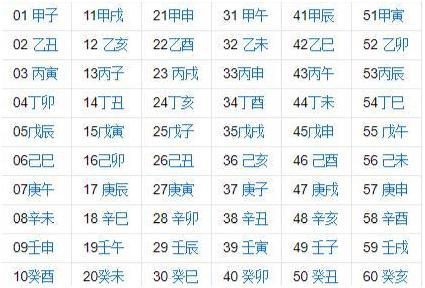
2, eight four columns each represents which age
Life is divided into different age groups, and each age group has its own unique characteristics and needs. In Bazi, the four pillars of Bazi represent different age groups. The division of these age groups helps us to better understand the stages of life and provides reference for personal growth and life planning. Below, I will introduce each of the age groups represented by each of the four pillars of the Bazi.
First is the Year Pillar, which represents the year of birth. Generally speaking, the age group corresponding to the Year Pillar is the early years of life. At this stage, people are still in the process of growth and development, with a high capacity for molding and learning. Therefore, people in this age group need to focus on developing healthy habits, establishing positive behavioral patterns, and cultivating appropriate hobbies. Family and educational environments are particularly important in shaping a person's character and values.
Next is the Moon Pillar, which represents the month of birth. The age group corresponding to the Moon Pillar is adolescence. Adolescence is a very critical stage in life, not only for physical and mental development, but also for building relationships and forming social role identities. During this period, young people need to recognize their own interests and abilities, and begin to make academic and career plans based on their own characteristics. The support and motivation of the family and society is very important, as well as the development of a positive attitude towards life and the ability to deal with problems.
Again, the Day Pillar represents the date of birth. The age group corresponding to the Day Pillar is youth. Youth is a turning point in life and a critical period for realizing personal values and pursuing ideals. At this age, the individual needs to start to be independent, set his/her own goals in life and work hard for them. At this time, individuals need to explore and develop their talents and abilities, as well as accumulate experience and improve their professionalism through study and practice. At the same time, it is important to establish healthy interpersonal relationships and social networks that can provide help and opportunities for personal growth and development.
After that is the Hour Pillar, which represents the moment of birth. The age group corresponding to the Hour Pillar is the middle age. Midlife is an inflection point in life, and a period where career stability, family development and personal growth are balanced. During this stage, individuals need to continue to improve their professional abilities and use their experience and wisdom to develop their careers. Family responsibilities and social roles begin to increase, and the individual needs to maintain love and support for the family, and work hard for the stability and happiness of the family. At the same time, they need to pay attention to their personal health, inner cultivation and spiritual growth.
Each of the Four Pillars of the Horoscope corresponds to a different age group, and each age group has its own unique characteristics and needs. By understanding the meanings and correspondences of the Four Pillars of the Eight Signs, we can better plan our personal growth and life. Of course, the Four Pillars of the Eight Characteristics is only one of the aspects. A person's growth and development is affected by a combination of factors, and we need to analyze and think about it in conjunction with other related factors. Through continuous learning and practice, we can better understand ourselves and achieve personal development and happiness.
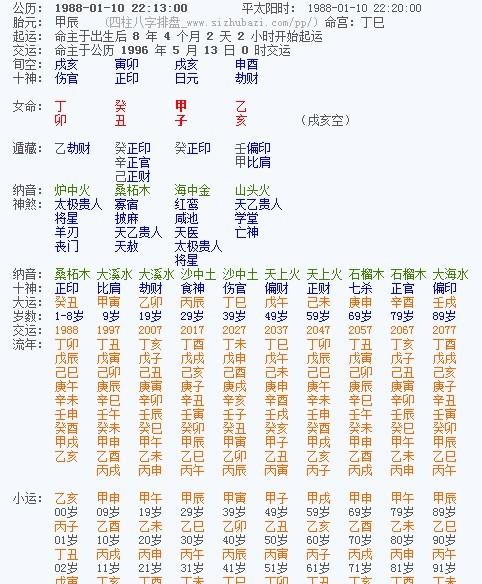
-
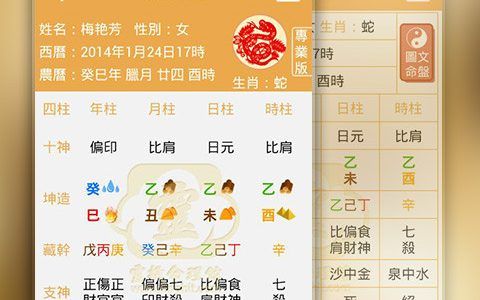
Which is the Children's Palace in Bazi (Which column is the Children's Palace in Bazi)
Bazi Charting is a method of numerology that is used to project a person's life. Among them, the House of Children is used to predict one's children. In the Eight Character Charting, the position of the Children's Palace, like the other houses, needs to be determined according to the four pillars of the Eight Character.
Bazi Encyclopedia -

Do you have a brother in your fortune?
Numerology is a method of deduction based on the Eight Characters, which can reveal the direction of a person's destiny as well as his or her personality traits. Among other things, the eight characters can also reflect whether a person has siblings or not. In the following section, we will discuss the meaning of whether a person has a brother or not in the Eight Characters from the perspective of numerology, to help readers better understand the wonders of numerology.
Bazi Encyclopedia -
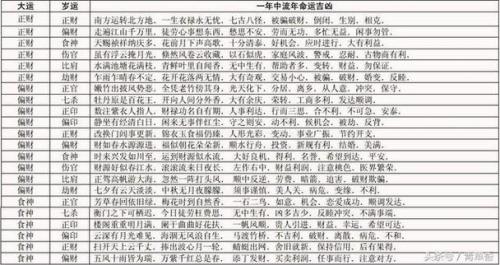
Eight Character Ranking Big Luck Interpretation (How to Interpret Eight Character Ranking Big Luck)
Bazi Xing Da Lun is a traditional fortune telling technique that uses the combination of the Eight Characters to interpret an individual's personality traits, destiny and general fortune. The theoretical basis of Bazi Xing Da Lun is the Eight Character Natal Chart. The Eight Character Natal Chart is made up of the eight characters of the four pillars of the year, month, day and hour of birth, also known as the Four Pillars Eight Characters.
Bazi Encyclopedia -

Heavenly trunk of yen in fortune-telling
八字由年、月、日、时四柱构成,其中日柱的天干被称为日元天干。天干共有十个,分别为甲、乙、丙、丁、戊、己、庚、辛、壬、癸。每个天干都代表不同的元素属性和特点,如甲代表木,乙代表木的柔性,丙代表火,等等。八字日元的天干可以反映出一个人的个性特征和先天格。
Bazi Encyclopedia -

Bazi Nayin what means (what is the meaning of Nayin in Bazi)
八字纳音是古老的一种命理方法,也是传统文化中重要的一环。它通过对人的出生年、月、日、时的天干地支进行组合,从而形成八个字,来推断一个人的性格、命运和吉凶祸福等。八字纳音具有一定的科学性和准确性,因此备受广大人们的关注和追捧。
Bazi Encyclopedia -
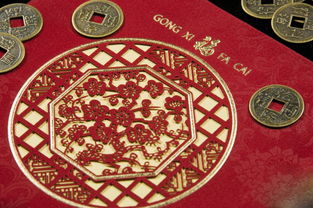
What does the strength of the eight characters mean?
八字强弱代表一个人的命运势力强弱。强命通常具备较强的运势和生命力,他们拥有睿智和才干,能够克服困难并取得成功。他们在事业上往往能够得到众人的认可,并且能够积累更多的财富。而弱命则相对不足,他们可能面临更多的困难和挑战,需要付出更多的努力才能追求理想和目标。
Bazi Encyclopedia -
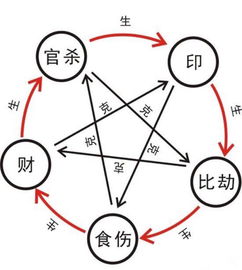
How many Ten Deities are there in Bazi (What is the meaning of Ten Deities of Bazi: Injury Official)
Bazi is a fortune-telling technique handed down from ancient times, by which the year, month, day and hour of birth of the day...
Bazi Encyclopedia -
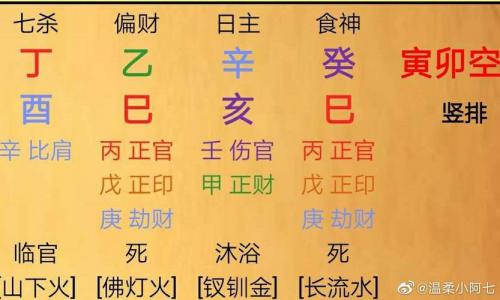
I don't have any good luck in my fortune (Why is my luck bad if I have good luck?)
1, the eight characters did not go to the lucky star of the Great Luck Bazi is numerology, through the individual birth year, month,...
Bazi Encyclopedia -
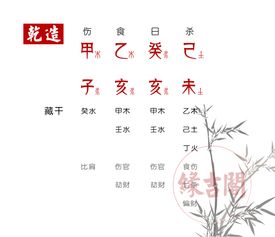
You have a lot of wood in your fortune.
Bazi wood especially: interpretation of the numerological characteristics of people with wood attributes I. Wood Attribute...
Bazi Encyclopedia -
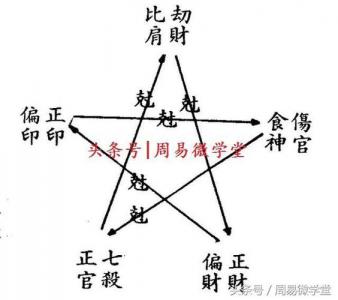
What does it mean that the eight characters are too hard (What are people with very hard eight characters?)
What does it mean that the eights are too hard? Bazi refers to a person's birth year, month, day,...
Bazi Encyclopedia
Zodiac
- [Chicken]1981 Rooster Capricorn Boy
- [Chicken]2023 Rooster's Lucky Colors
- [Chicken]1993 Rooster Matching Chart
- [Chicken]2005 Rooster Boy Suitable Occupation
- [Chicken]Female Chicken and Male Dog Marriage
- [Chicken]Fate of a Rooster born in 1981
- [Chicken]What is the best month to be born in 1981 for a Rooster?
- [Chicken]How old is a 1957 Rooster?
- [Chicken]Are male Rooster and female Rabbit suitable to be husband and wife?
- [Chicken]12 Rooster Women
Hot Topics
- What does it mean to dream of shopping?
- How to solve the eight characters of the five elements of the Year of the Rooster (a complete list of the five elements of the Rooster's zodiac sign and year of birth)
- What is the best feng shui location for wine in your home?
- What is the meaning of the main star of the Bazi, Zheng Guan and Zheng Cai, the yen and Zheng Cai?
- Happy winter solstice wishes, happy winter solstice, warm heart
- October 22 of the lunar calendar in 2025 is an auspicious day for engagement. Is it a good day for engagement?
- I dreamt that a dead old man was talking to me.
- Do you dream of strange and exotic surroundings?
- Is it good to be a Dragon at the time of the Dragon's birth?)
- Villa entrance door feng shui
- What to Eat on the Winter Solstice - Winter Solstice Food Feast: The Warmth of Traditional Food
- Rat Man and Tiger Woman Zodiac Pairing
- Bazi
- Layout
- Nameing
- look face
-
1
What to Eat on the Winter Solstice - Winter Solstice Food Feast: The Warmth of Traditional Food
-
2
Happy winter solstice wishes, happy winter solstice, warm heart
-
3
October 22 of the lunar calendar in 2025 is an auspicious day for engagement. Is it a good day for engagement?
-
4
Is it good to get engaged on the 21st day of the tenth lunar month in 2025? Is the engagement auspicious?
-
5
What is the opening day on October 22 of the lunar calendar in 2024? It is advisable to open the market for business. Inquiry on auspicious days
-
6
Is the 16th day of the tenth lunar month in 2024 an auspicious day for engagement? Can you get engaged and get married today?
-
7
Is the 14th of October in the lunar calendar in 2024 a good day to open? It is appropriate to inquire about the auspicious day for opening?








